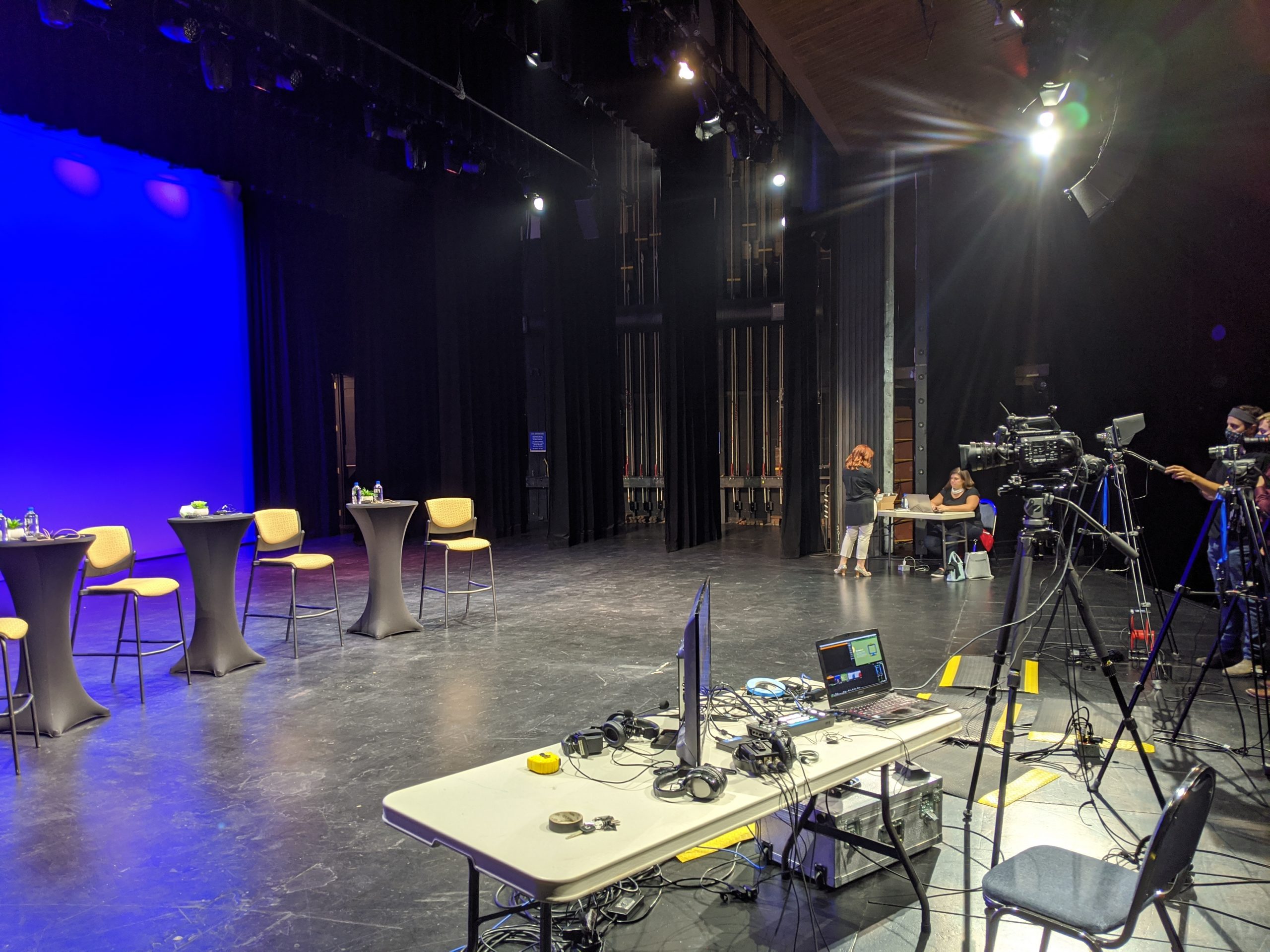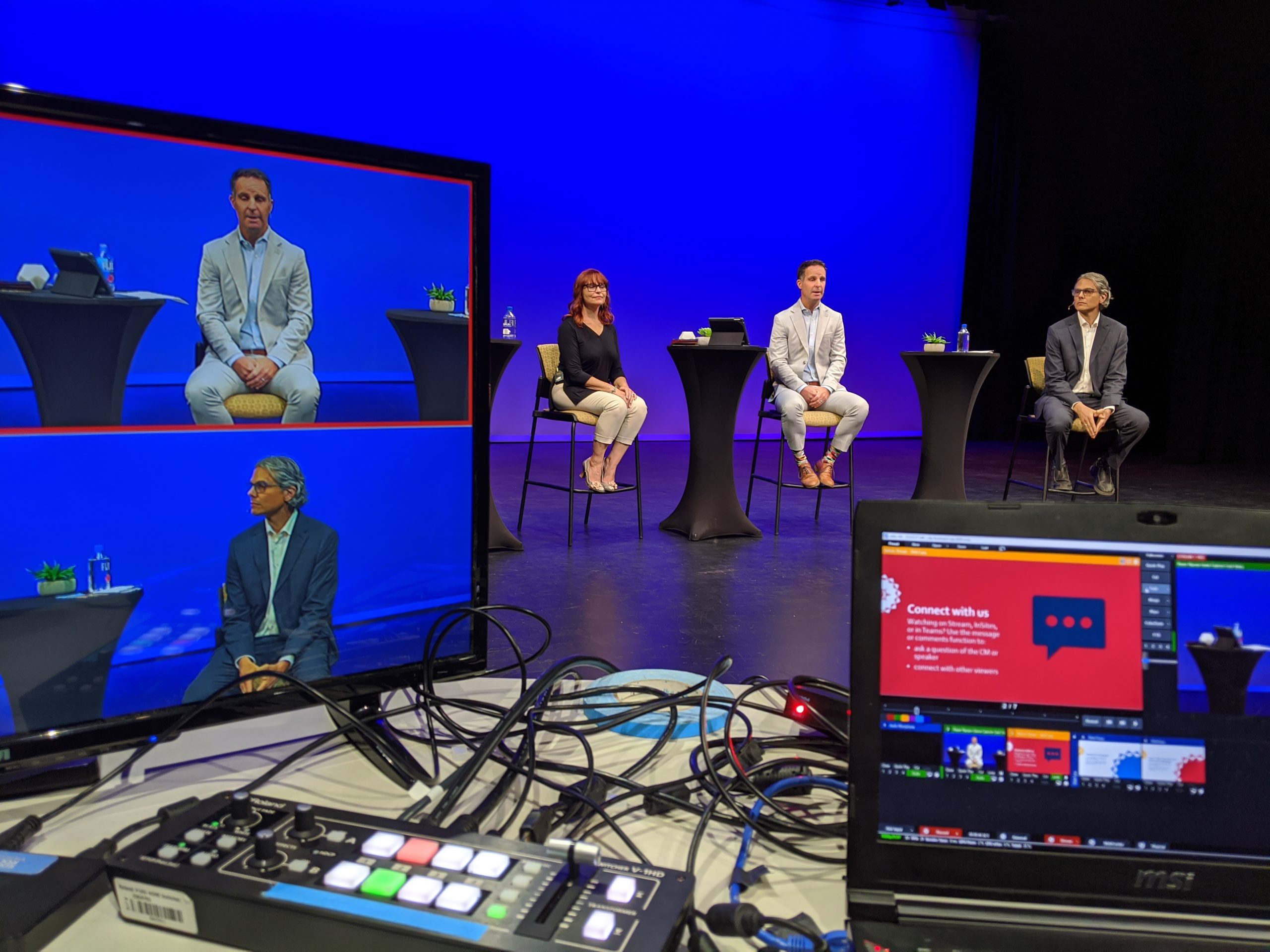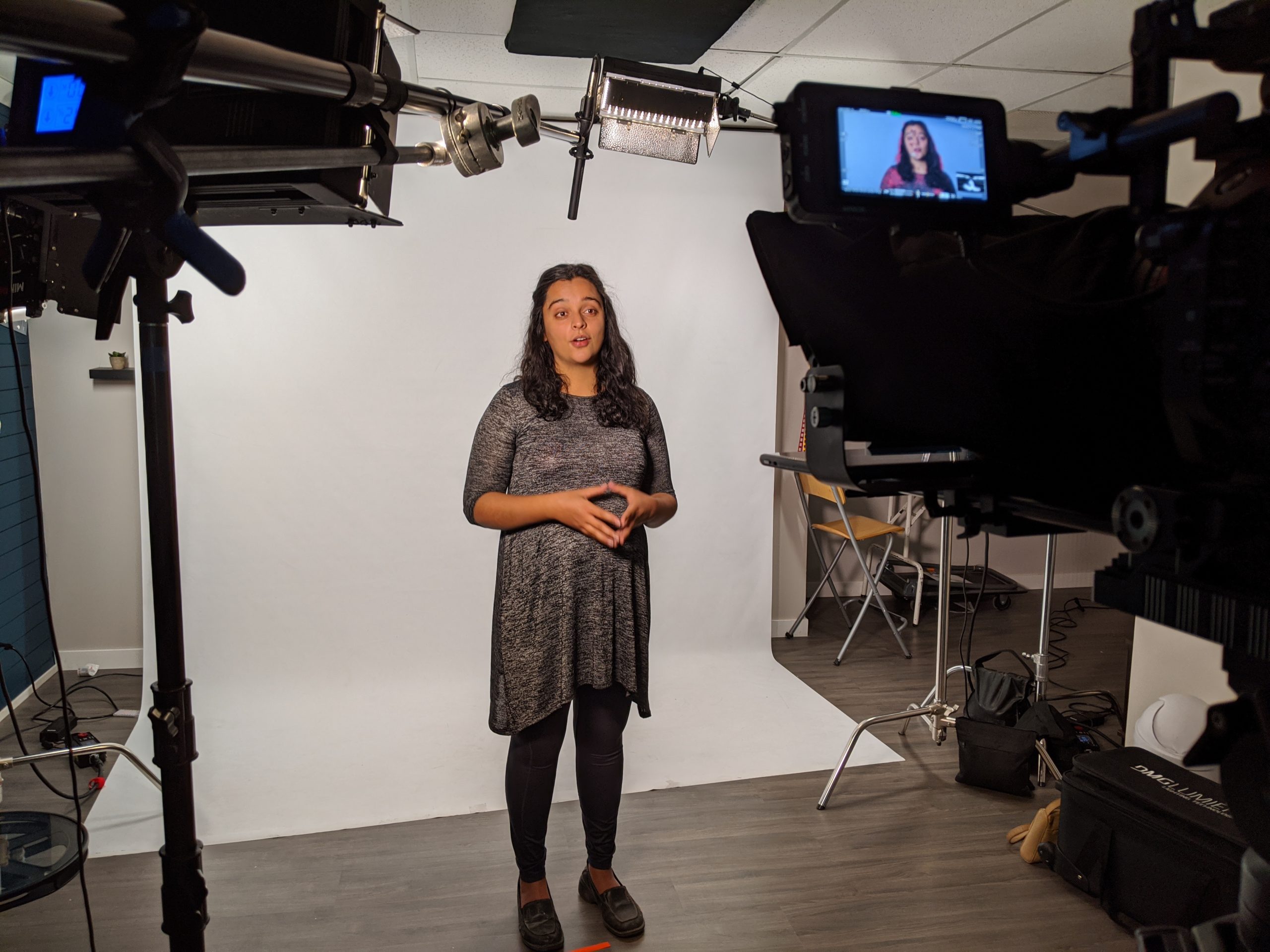Last year, most big events were either cancelled or made into live-streamed versions of the events. I can’t be alone when I say… some of those live streamed events did not capture the feeling of being at that event–they felt like fatiguing reminders of how hard it is to have meaningful events when they can’t happen in person. But there absolutely is a way to do it right: you can still ticket a live-stream event and have it be an engaging, professional experience for your audience. I firmly believe great live streamed events in Kelowna are possible, but for the sake of all of us, there are a couple of things we have to address before you decide to hit the big ol’ “LIVE” button.
I’ll preface this whole thing by saying I’m not talking about conference calls over Zoom. I’m talking about that big “thank-you-sponsors” gala you were planning. A big product launch. A dance show. You want to put on a live concert? Don’t make it hard on your viewer. They won’t want to participate in something that they can’t enjoy. Your event shouldn’t feel like a “consolation prize”, it should be the real deal.
So, instead of having a live streamed event in Kelowna that looks like garbage–read these six things that you should avoid.

1. Don’t assume simply hitting “go live” on your smartphone is going to get the job done.
I imagine you’re putting a lot of thought into your event. It deserves to be heard, seen, and engaged with–and that’s just not going to happen by itself.
It’s all scale-able too–whether you have some money to invest in equipment upgrades or if you’re willing to hire a company to do it. You can even do it yourself on a shoestring budget if that’s your only option.
You will lose engagement if your stream is hard to watch or hard to hear. We’ve all been there: you’re tuning into some live internet programming, but the audio cuts out or you can’t make out what the presenter is saying.
Want to do it in-house? Get a camera (or a few–DSLR’s with video capability have never been more affordable) that can accurately depict your event.
Light your subject, and get them a microphone. Nobody wants to see somebody on a live-stream that’s lit by overhead fluorescents, and your audience shouldn’t have to strain to hear what’s happening over ambient traffic noise in an echo-y room. You could be about to present a massive achievement for your organization, but your audience might have already turned off the stream. Nobody wants to watch a bad live streamed event.
No money for the fancy stuff? We’ll talk about other options in point #4. But I strongly, strongly recommend you make the decision to display your content in the best possible way: using quality gear. It will radically change the look and feel of your live streamed event in Kelowna, and will keep your viewers engaged.

2. Don’t trust that wi-fi connection.
There have been so many occasions when I’ve seen people forget to consider their wi-fi connection. You might think you have a good signal, or reasonable data service on your mobile phone, but you’re leaving it up to chance by not investigating it first.
I run what’s called a “speed test” every time I run a live streamed event for somebody. This is super, super easy and free: just visit a website like www.speedtest.net and find out what your connection is like! You need to keep an eye on what the speed test says your “upload speed” is–that’s a measurement of how capable your internet connection is for broadcasting live content. Anything lower than 4 megabits a second (mb/s) could fail you and your audience, leaving your event at risk of massive quality loss or full-on drop out. If you find your upload speed is below that 4mb/s threshold, you can always call your internet service provider and upgrade your plan.
A tip from a professional: if you’re using a computer to stream, run a wired connection from your router straight to your computer (where possible). This way you won’t be fighting for internet space. This will always be a safer option (though again, run that speed test regardless).
In the case of outdoor events, get an LTE stick that you can plug into your computer (and test the speed of that). Now, this is getting into the side of things that I’d honestly just recommend you get a professional for, but I hope the bottom line is clear: double-check your upload speed. Make sure it’s going to work in your existing infrastructure.

3. Facebook and YouTube are not your friend
It’s no surprise why people love streaming events to YouTube and Facebook. They’re big, trusted platforms with an interface you already understand. But if you’re streaming an event, you’re probably going to have your stream shut down in the snap of a finger.
Why? Well, the short answer is artificial intelligence (AI). That sounds terrifying, but it’s YouTube and Facebook’s way of ensuring you’re not using copyrighted material in your stream. If there is even a hint of copyrighted music playing in the background of your video (perhaps playing on the radio), the AI can detect it. If this happens on platforms like Youtube or Facebook, you run the risk of the AI muting the audio of your stream as it’s happening, and in some cases, even taking the whole thing offline.
This has happened to me in years past. I’ve had streams deleted and muted. I’ve learned from this, and I hope you can learn this before it happens to you.
You need a different streaming provider. Some I can recommend are Dacast or Wowza. My company, Distill Media, uses a private server for this purpose that works great. If you want to hire a professional streaming company to do this for you, I urge you to confirm with them that they’re not streaming directly to YouTube or Facebook. I can’t think of anything worse than inviting somebody to a virtual event, and then having the audio muted during the event. Worse yet, the recording of the stream could be deleted from the internet because of a copyright violation.

4. Don’t say, “I can’t afford the professional stuff, so I guess I can’t do this at all”
It’s no surprise why people love streaming events to YouTube and Facebook. They’re big, trusted platforms with an interface you already understand. But if you’re streaming an event, you’re probably going to have your stream shut down in the snap of a finger.
Why? Well, the short answer is artificial intelligence (AI). That sounds terrifying, but it’s YouTube and Facebook’s way of ensuring you’re not using copyrighted material in your stream. If there is even a hint of music playing in the background of your video, the AI can detect it. Somehow, it seems way better than the human ear at detecting stuff like this–your stream will be taken off line, or they will interrupt it with advertisements.
This has happened to me in years past. I’ve had streams deleted and shut down. I’ve learned from this, and I hope you can learn this before it happens to you.
This is not true. Obviously, as a video production professional, I care very deeply about doing things the right way, but that’s not arbitrary. Better quality gets you better engagement every time… but there are a few things you can do to improve your stream quality on a shoestring budget.
Let’s say you only have your mobile phone. Your goal is to make your phone camera look the best it possibly can. Phone cameras are getting more advanced all the time, but they still do weird things in contexts like this.
First, get your camera (phone or otherwise) and make sure it’s on a tripod. There are cheap options for phones and cameras alike. Don’t want to do that? Use a bookshelf. Get the phone camera steadied–nobody wants to see your nauseating, shaky live-stream.
Second: give your camera a good lighting situation! Use whatever portable lights you have available–even a shop light can work in a pinch–to light the face of your subject. Make sure the background isn’t brighter than your focal point. Declutter and darken the space behind a presenter however you can.
Lastly, get some better audio. There are loads of good, cheap solutions for microphones online. There are microphones that you can connect wirelessly to your phone–and that will reduce the ambient noise and lack of clarity that makes your audience tune out. You could even get a Rode directional video microphone that can mount on your camera or phone. You want to capture your subject in your live stream, not all the distracting sounds around your subject.
These things don’t cost much, but they make a world of difference.

5. Your audience wants to interact. Don’t ignore them.
It may feel awkward to look into the lens of a camera and present, but try to envision it as if you are looking into the eyes of your audience. Make your presentation personal and address the audience. Just because you’re hosting a virtual event doesn’t mean that you can’t make it an inviting and engaging experience for the audience.
This shouldn’t be corporate or rehearsed. You’re having a face-to-face with your audience–your audience just happens to be on the other side of a screen. And even if you have a mixed audience, both in person and online, make sure you acknowledge everyone watching online: “Thank you for joining us, we’re so happy you’re here with us!”

6. Don’t just put on a show–use interactive tools to keep people engaged.
People love to be interactive, and it’s been harder than ever to do that. This virtual event might be the best available option for them and it’s an opportunity to connect! Get creative. You can embed a comment section so people can communicate with you or other people who are watching. You could embed a share button or a like button so people can react in real time. Some online streaming platforms even provide ways to poll viewers and show the results on screen. (Virtual trivia event, anyone?)
The sky’s the limit–some things are accomplishable on your own, and some things you might need a more technical hand to help you. This is especially important if your subject matter is on the drier end of things–you’re going to want to implement ways for your audience to stay engaged.

Oh, and one last thing!
If possible, don’t do this all by yourself. Ask somebody to monitor the stream, camera, and audio so that the presenter can focus on what they’re doing. Don’t be the hero–bring somebody in to help you troubleshoot. Obviously, my company prides itself in its ability to create engaging, top-quality livestreams, so we’d love to be involved–but you can get a few people to have eyes on the technical side of things, you’re going to be a lot happier when it comes time to hit that “live” button.
I hope some of these things can nudge you towards creating great live streamed events in Kelowna this year. There’s still a lot of opportunities available to bring your events to people virtually–but I’d rather you do it in a way that yields a higher return on investment for you and your organization. You’re tired of bad live streams, and so is the rest of the world. There’s no need for them in 2021.
